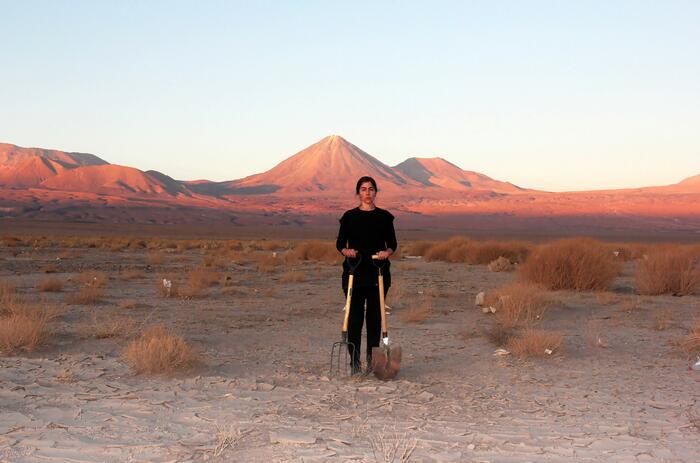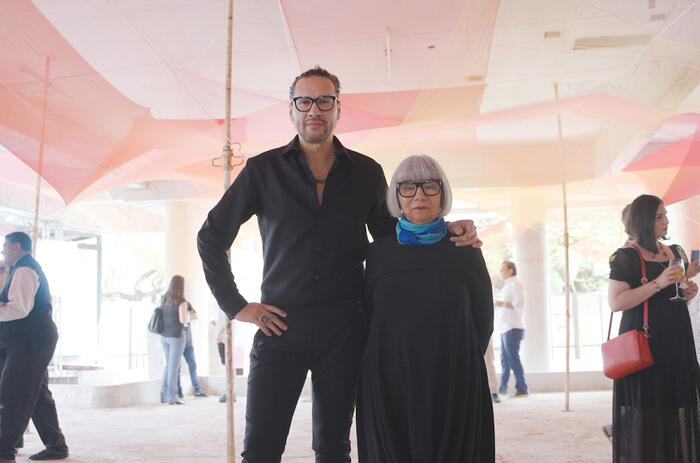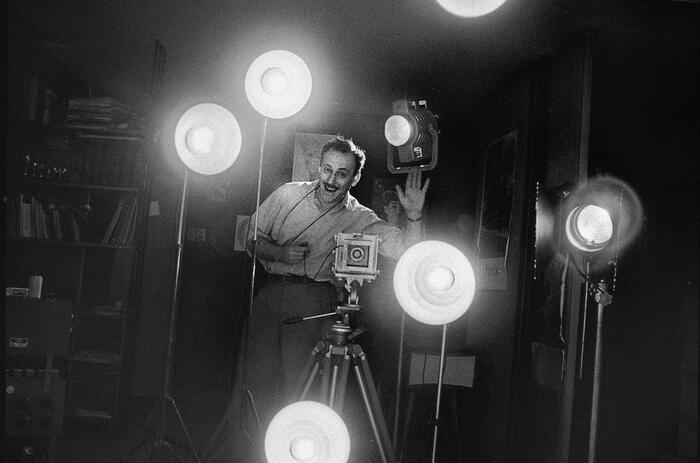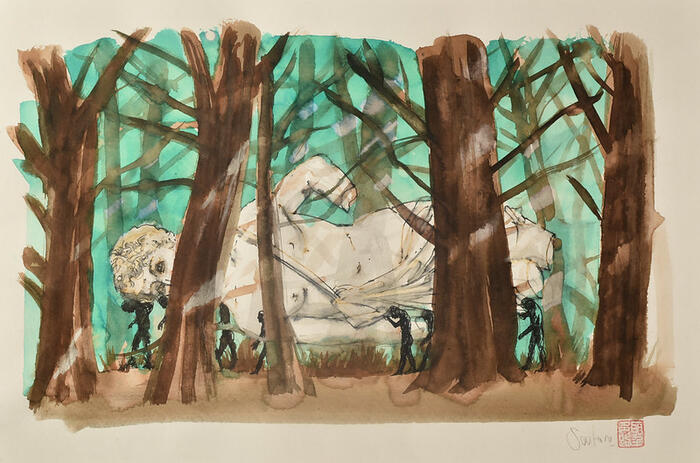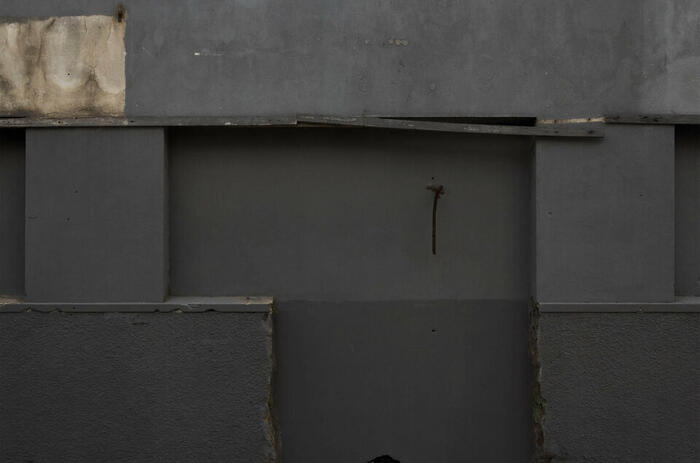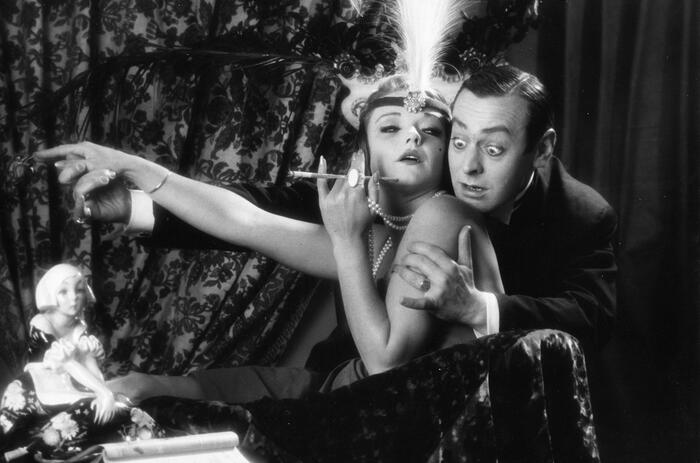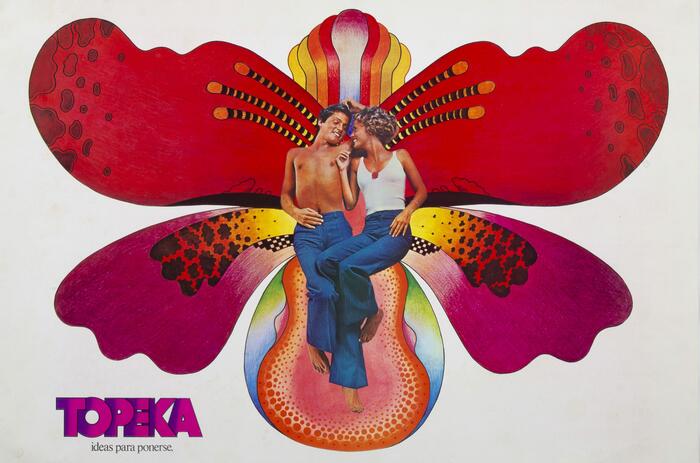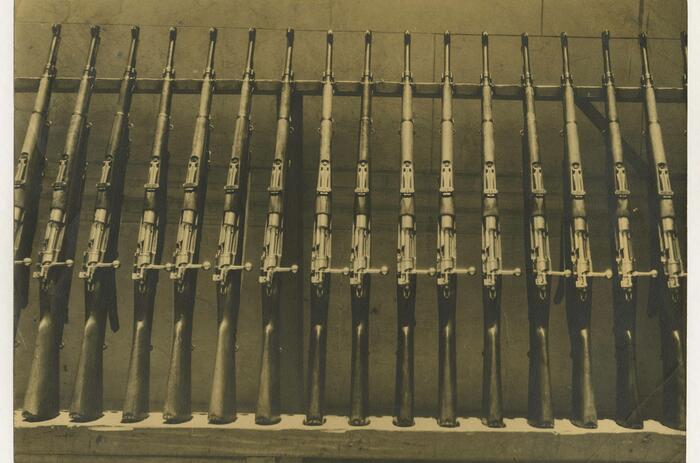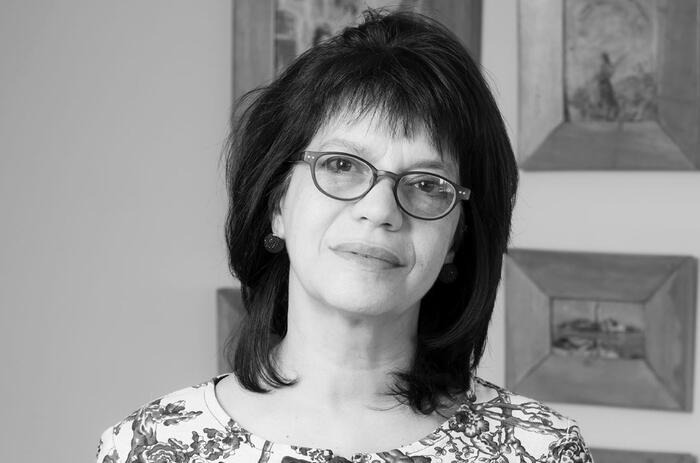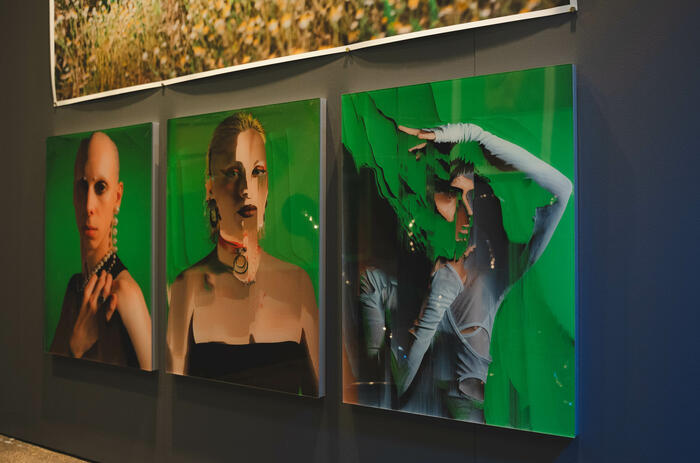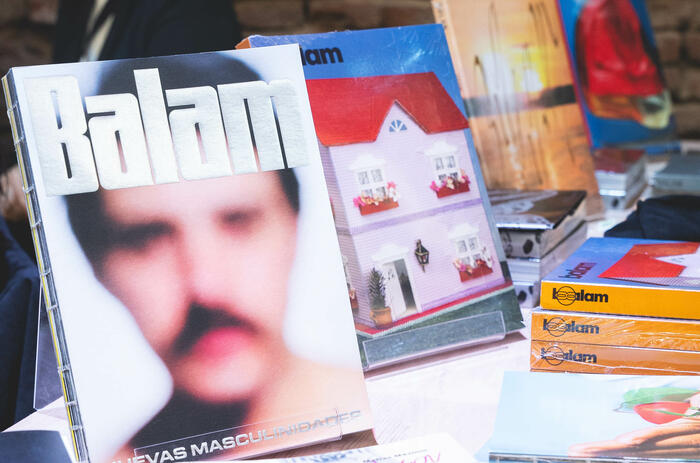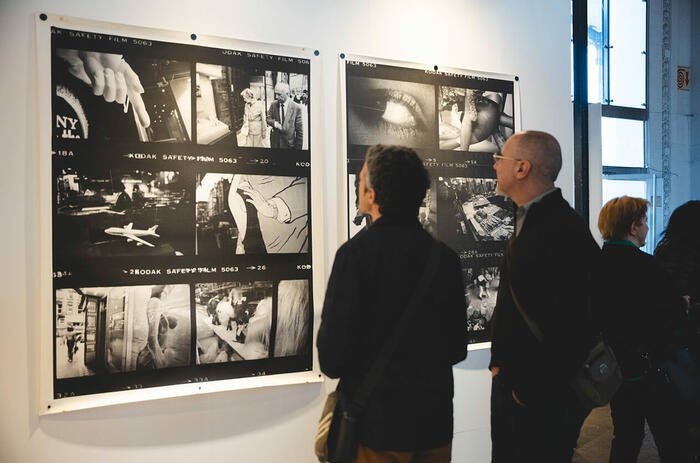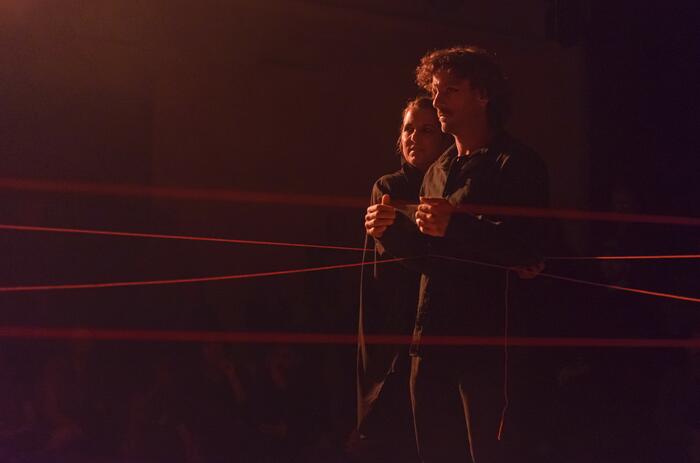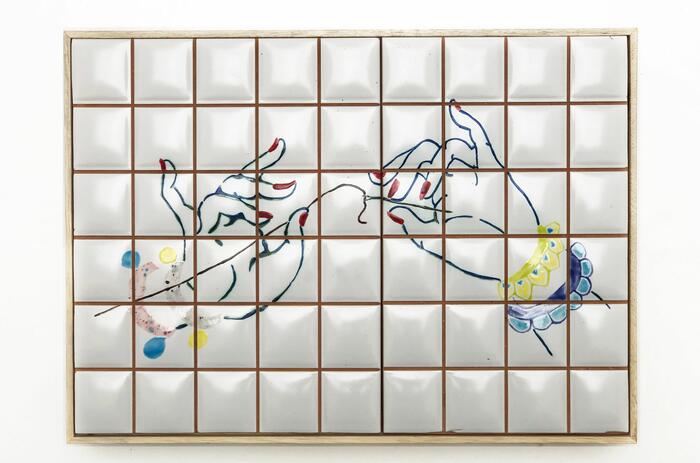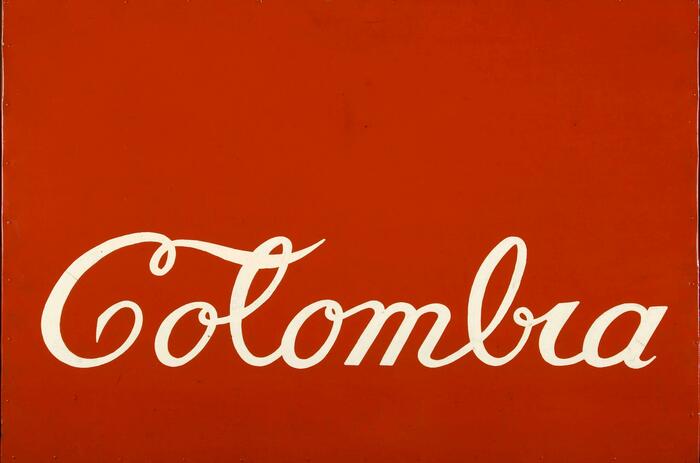SOL MIRAGLIA AND ESTUDIO LUISITA. A LEGACY IN MOTION
Foto Estudio Luisita is a photographic archive of the Argentine show business that records, among many treasures, the golden age of revue theater.
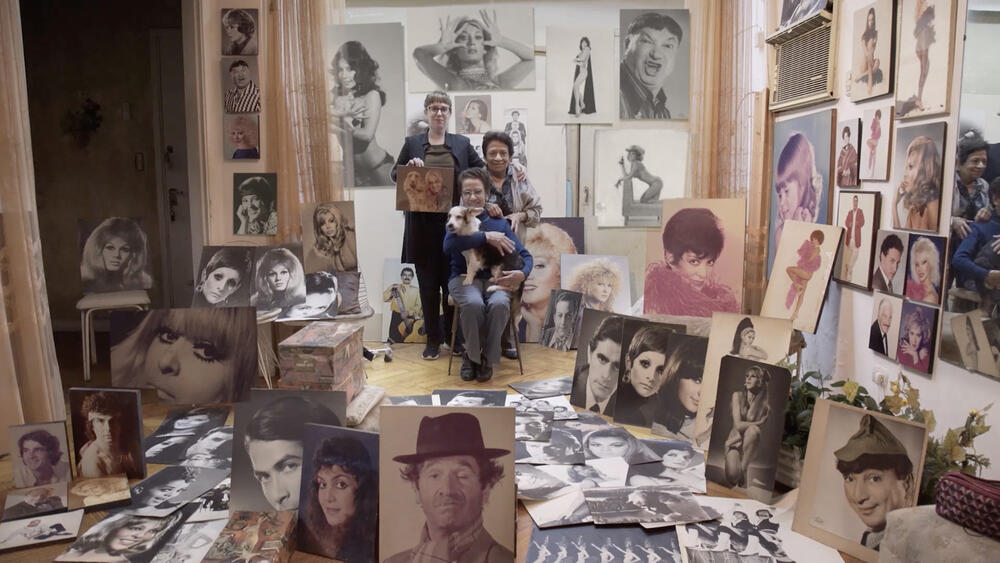
Founded by Luisita and her sister Chela, who had recently emigrated from Colombia, the studio portrayed vedettes, models, comedians, singers, musicians, actors, actresses, contortionists and acrobats, tropical bands and drum bands, among other show business personalities.
Nélida Lobato, the Pons sisters, Amelia Vargas, Moria Casán, Susana Giménez and Susana Traverso are some of the mythical figures who passed through the studio during the second half of the 20th century in Buenos Aires.
In 2009, photographer Sol Miraglia, in a curious and moving gesture, found them with their home, their studio and their extensive photographic archive. In an interview with Arte al Día, she tells us about her enormous task of cataloguing, rescuing, disseminating and preserving this great legacy.
-
Foto Estudio Luisita. Susana Giménez, 1977_ impreso en 2021. Gelatina de plata. 37 x 37 cm. Edición 3 de 5 - Silvina Pirraglia
What was the first thing that attracted you about what they were doing in the studio?
I met Luisita when I was 19 years old and never imagined that I was going to find something that would then become a life project.
I had taken a job in microcentro (downtown Buenos Aires) where I was giving Photoshop lessons. At that time Luisita's studio used to send to all friends and colleagues in the field a calendar with little stars hand-glued on it. When I saw that, I got really moved. It gave me a sense of tenderness, a hypnotic feeling. I finally met Luisita and her sister, but I had no record or knowledge of what they did.
During the sixties, Foto Estudio Luisita was at the height of the revue-theater boom, were they made all the posters. But then, the whole culture of Corrientes Street declined, and eventually the paradigm of photography began to shift to a digital format. When I met Luisita and Chela, some people kept calling them to have their pictures taken, so I offered to take the pictures with my digital camera. We must have made 8 books and then they stopped producing.
When did you decide you wanted to put together a project with the hole archive of the photo-studio?
It was very gradual. While I was in college there was only one teacher who supported me to put together a project about her story for the photojournalism course. And from then on, Luisita started to show me some things, including the albums filled with photo prints that were in the entrance hall. The albums had classic copies autographed by Susana Giménez and other celebrities that the studio used as a sort of portfolio.
I started to take pictures of the house-studio, which was also what appealed to me the most. It reminded me a lot of my grandmothers' houses and every Friday after work I would go for tea and stay until the evening.
I spent five years going back and forth, exploring things. I knew it was very important, but I had no idea that it was going to be the legacy of my life.
It is only now that the value of revue theater is being redefined, because it was frowned upon for a long time. But at that moment, what I thought was, "What about the studio's perspective and point of view?" I would see it and say, "I'm going to keep fighting for this".
Many people told me it wasn't worth it, and Luisita and Chela wanted to throw away all the negatives because it took up space, they didn't know what to do, if they should take it to an antique dealer. I stopped them from doing so.
A lot of debate as to whether this was photography or not...
Yes, a lot. Or what to do with it, what value it has. It has a different meaning for me anyway, but Foto Studio Luisita is a history project that has to do with a national heritage, of a glory era in Corrientes Street. Besides, Luisita and her sisters were afro-descent, from Colombia, women, unmarried. They were a matriarchy.
It broke my heart to be told no. My main motto to continue with the project in spite of everything was: I don't want this ritual that I live every Friday –or every time I went there– to disappear from the face of the earth without anyone knowing about it. They cannot leave this plane without recognition.
A more personal and intimate dimension of your experience was what you wanted to share...
It was like entering a unique world and wanting to share it. Then it acquired a more collective and social dimension because it expanded. But it was my reading as a photographer and based on that I was able to develop my vision, decisions, tensions and tastes, once I started to have more contact with the archive.
With more than 40,000 images in the archive, how did you face the challenge of inventorying and cataloguing all the material?
It was very progressive and gradual the way I came across the archive. In relation to this, I believe that the archive is in charge. These are processes that have to happen organically, if it did not happen it was because it was not meant to be. If this box cannot be seen now, it will happen another time or maybe never.
In this whole situation of being in the house –of seeing that Luisita and her sisters wanted to throw away the boxes– I didn't really understand what was in there. What I did know was that every drawer or closet I opened, things appeared. I searched for stuff, but without haste. I began to realize that what I liked, beyond photography itself, was to spend time with them. So, I decided to start filming birthdays and other daily and intimate situations, as a kind of archive.
But one day while having tea, I opened one cabinet and found some boxes that said Maipo 1973 with 6x6 photos –a very particular format– with some pictures of the Rojo sisters painted in gold. And it was like my second moment after the calendar. It was somewhere between a German photograph, a geometric composition and two goddesses. For me this was a kind of revelation. The beginning of another period.
When the archive boxes are in the dark with things that are still, and then you suddenly make them circulate, something happens. When there is movement –having taken those slides out, looking at them, photographing them– an intergenerational dialogue for me is born.
-
Foto Estudio Luisita. Ethel y Gogó Rojo, “El gran final”, Maipo Superstar. Teatro Maipo, 1973. Impresión giclée. 100 x 100 cm. Edición de 5 - Silvina Pirraglia
It was an impulse to put the archive in motion... metaphorically and literally.
Many movements I make with the archive don't make sense; I discover its meaning later on. There is a dialogue. Once, I was reviewing an archive and the next day one of the photos appeared full of fungi, it had turned black. I didn't quite understand what it meant, but I said, "at least something is happening".
In a way, I came in at the last period of Luisita and their sister's lives to finish tidying up. To give shape to something. That also made me develop as a photographer, with Luisita going through me.
The photo of Maipo that I found that day in the box was fundamental to continue with the project. When I found the complete negative of that photo, I began to review the entire archive.
Did they have a record of everything they did?
They had everything inventoried, but most of the early part -the photos they took as soon as they arrived in Buenos Aires- were thrown away and they were left with an archive that was selected with an emotional criterion, with the most important stars and from the period of the beginnings of revue theater.
I began to see that many of the photos I saw in the albums and portfolios had their negatives with the complete session. And for me that was her work: the photos where you could see the background or part of Foto Estudio Luisita. It was a discussion I had with her, because she told me that all the mistakes could be seen there and for me that was what was valuable. Those negatives told the whole story of the studio, where dogs, hands and changes of light appear. And in terms of composition that was what it attracted me.
And now in Pinta BAphoto, what is the proposal you are presenting with the archive?
In this 2023 edition of BAphoto, together with HACHE we wanted to show part of the exhibition we did at MALBA in 2021 with prints made with silver gelatin.
But then, a characteristic that the studio had was that they didn't make contact sheets (which was very common). They made more complex unretouched samples, but they were cut out. I started to make compositions from the negatives to continue and expand the archive.
In addition, I present some photos that were from a period of the studio that had never been seen because it was already another era of the revue theater (Museo Moderno’s exhibition Cultura Colibrí is also showing some of these artworks). The structure and the paradigm of the aesthetics and the visual approach had changed, from continuous light to flash. They are color negatives that I photographed and that there are no copies or very few that are degrading.
I made copies in mini-labs because soon paper and supplies will be harder to obtain. At some point the chemical copy will cease to exist because it will be replaced by other printing techniques. I like it because in a way it is something alive, photography has always been something alive. It is not the same a print of today's museology standards that can get direct daily sunlight or is in an environment in a house and nothing happens; than a piece that you have to take care of, that can degrade. The idea is to expand it and that people can acquire it, with materials that are not going to be made anymore.
I put together works based on that, but intervening them. What motivated me the most was to try to replicate that first moment of the calendar, because with Luisita we always stuck stickers everywhere. Also replicating how they used to intervene things and objects, with crochet, glitter, ornaments. I started to intervene the photos with different elements that refer to the revue theater. With stitched pieces or all kinds of strass and glitter.
Finally, together with the girls from CAOS, an architecture studio from Córdoba, we thought together a planner furniture where the idea is that people can open the drawers and recreate the situation of an archive, of drawers that surprise us.
-
Foto Estudio Luisita. Luisa Albinoni, 1997_ Impreso en 2023. C-print. 15 x 15 cm - Silvina Pirraglia
-
Susana Giménez, ca. 1980. Impreso en 2023. C-print y composición de strass. 20 x 30 cm. Edición de 25 - Silvina Pirraglia
-
Foto Estudio Luisita en Pinta BAphoto
-
Foto Estudio Luisita en BAphoto
-
Foto Estudio Luisita en Pinta BAphoto
-
Foto Estudio Luisita en BAphoto
-
Foto Estudio Luisita en BAphoto
Was there anyone who contacted you as a result of this project and who had memories at the studio?
I have come across very beautiful stories because of Luisita. But it also happens a lot that they don't want to know anything because they remember a lot of things and that hurts. I think that when you come into contact with an envelope with negatives or copies, each person of the photos opens a world. And you get to know them. Some don't, others do. I became very good friends with dancers from the magazine, journalists and choreographers of the industry.
The story of Las gromas was wonderful. I had no idea who they were and once by chance I saw a box in Marketplace with the dancers' family archive and that's when I knew who they were. After 10 years of searching, I finally found them this summer because the box that was posted with the file was similar to the ones they used in the studio and that caught my attention.
-
Foto Estudio Luisita. Las gromas, 1973. Gelatina de plata. 37 x 37 cm. Edición de 5 - Silvina Pirraglia
What keeps you going?
I don't know if there is an explanation. It happens. I think it's a life project, a legacy that they left to work on. It is a responsibility of how to continue and how to preserve it. Because an archive does not live more than 2 or 3 generations. Who gets to keep all that stuff that takes up space?
Photography is the memories and the steps each person leaves; when someone wants to take a photo, it is because they want the image to remain. They kept all the work they did. And photography is a medium that will no longer exist, so it is urgent for me to preserve it. It is also my artistic discipline and it feeds me. It has to do with rescue and help.

